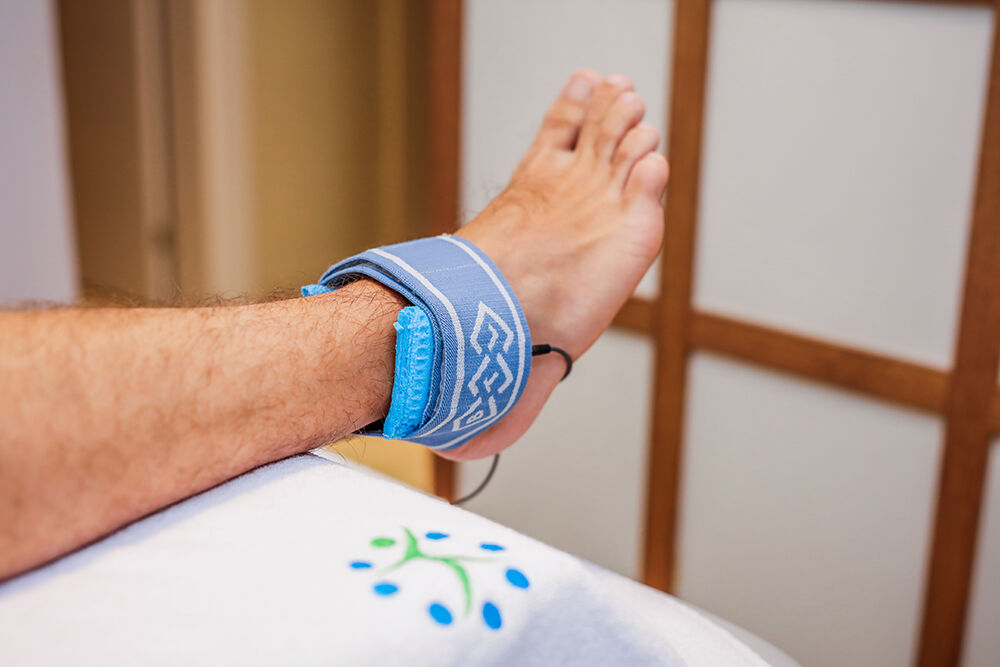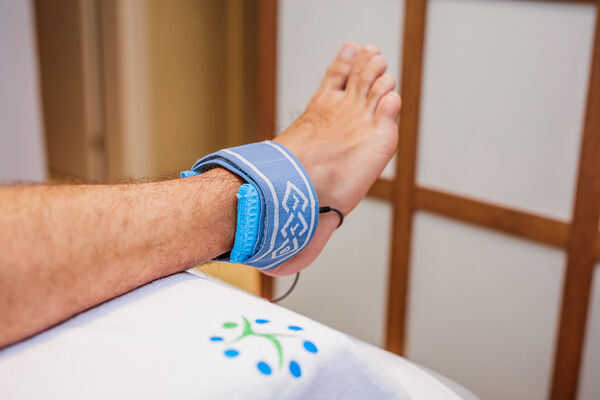PAIN IN THE ANKLE JOINT AND FOOT REGION
The ankle joint is a firm structure that provides stability and flexibility to the human body during daily physical activities. The foot and ankle joint are under stress in both professional athletes and people who are involved in other physical activities, which means that ankle joint injuries and painful feet are frequent occurrences.
Depending on the stage, foot and ankle joint pain can be in:
- The acute phase
- The subacute phase
- The chronic phase
Injuries to the ankle joint and feet can come as a consequence of:
-
Injuries to muscles, tendons or ligaments
-
Injuries to the joint capsule
-
Injuries to the bone tissue
Types of injuries to the ankle joint and feet:
- Distortion (ligament tear, partial rupture, total rupture)
- Fracturea
- Bursitis
- Achilles tendonitis
- Plantar fascitis
- Arthrosis (ankle joint pain)
- Peroneal tenosynovitis
- Tenosynovitis of the posterior tibial tendon
- Tenosynovitis of the anterior tibial muscle
- Medial tibial stress syndrome (crus pain)
- Morton’s neuroma (foot pain)
- Tarsal tunnel syndrome
Procedure for diagnosing ankle joint and feet injuries
Evaluation (assessment) of the condition
An individual examination by a specialist of physiotherapy aimed at determining the cause of the ankle joint injury. By applying specialised diagnostic procedures along with anthropometric measurements (range of motion, extremities reach, MMT- manual muscle test), we can determine the cause of the affliction. The goal of the assessment is to reach a medical and physiotherapy diagnosis.
A physiotherapy diagnosis is a thorough report made by a specialist of physiotherapy with a detailed description determined through a previous evaluation.
An individual treatment and rehabilitation plan is created after formulating a diagnosis, depending on the type and degree of injury. The application of machine techniques alongside manual techniques ensures a full scope of rehabilitation aimed at maximising the effect of treatment.
Treatment and rehabilitation of the ankle joint and feet:
Any injury or painful condition is treated individually. Treatment plans can depend on time constraints and the cause of foot pain or ankle joint injury.
In the acute stage with pain and swelling, a wide spectrum of machine techniques is applied, like High intensity laser treatment (HILT) , BEMER (Bio-Electro-Magnetic-Energy-Regulation) , Transcutaneous electrical nerve stimulation (TENS) and Tecar machines , as well as other physical procedures. Specially designed pain relievment therapy through these machines has proven itself effective in alleviating pain and inflammation in acute stages.
During the subacute and chronic stages, when pain is not in the forefront but there still exists a functional impediment of the ankle joint, the main goal is to restore joint functionality through applying various manual techniques along with kinetic therapy and shock wave treatment .

One of the more significant manual techniques is the Mulligan concept, applied individually and often alongside kinetic taping and neuromuscular kinetic taping , by our certified chartered physiotherapist. Shockwave treatment is the most effective method of removing calcification, which is the chief issue in chronic afflictions of the Achilles tendon .


